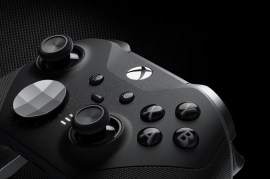Razer Wolverine V3 Pro review: an almost unfair advantage controller
An esports-grade control pad in every sense

Stuff Verdict
An outstandingly capable controller that’s solely focused on competition. Ultra-responsive inputs mean the Wolverine V3 Pro will surely become an esports mainstay
Pros
- Ultra-precise buttons, triggers and analogue sticks-
- Perfectly place macro buttons for different grip styles
- Flawless wired and wireless performance
Cons
- Expensive
- No love for Ps5 owners… yet
Introduction
PC peripherals have long been Razer’s bread and butter, but now that console-based esports are taken just as seriously as their mouse-and-keyboard counterparts, the firm has majorly stepped things up on the controller side. The Wolverine V3 Pro was purpose-built with pro gamers in mind, using tech borrowed from the PC world for lightning-fast inputs and unparalleled customisation. Or at least, that’s the theory.
At $200/£200/€230, Razer’s first fully wireless Xbox controller will set you back more than an official Xbox Elite Series 2 pad. It has fewer interchangeable parts, but some ergonomic tweaks that suit multiple grip styles mean that may not matter. The real highlights are the buttons backed by mechanical switches, uprated joysticks and multiple customisable macro keys. Has Razer really brought the speed and precision of a gaming mouse to a console controller?
How we test gaming hardware
All games consoles and gaming hardware tested on Stuff are put through their paces with days’ worth of play time. We use our years of testing experience to judge areas such as build quality, software experience, battery life and other features. Manufacturers have no visibility on reviews before they appear online, and we never accept payment to feature products.
Find out more about how we test and rate products.
Design & build: get a grip
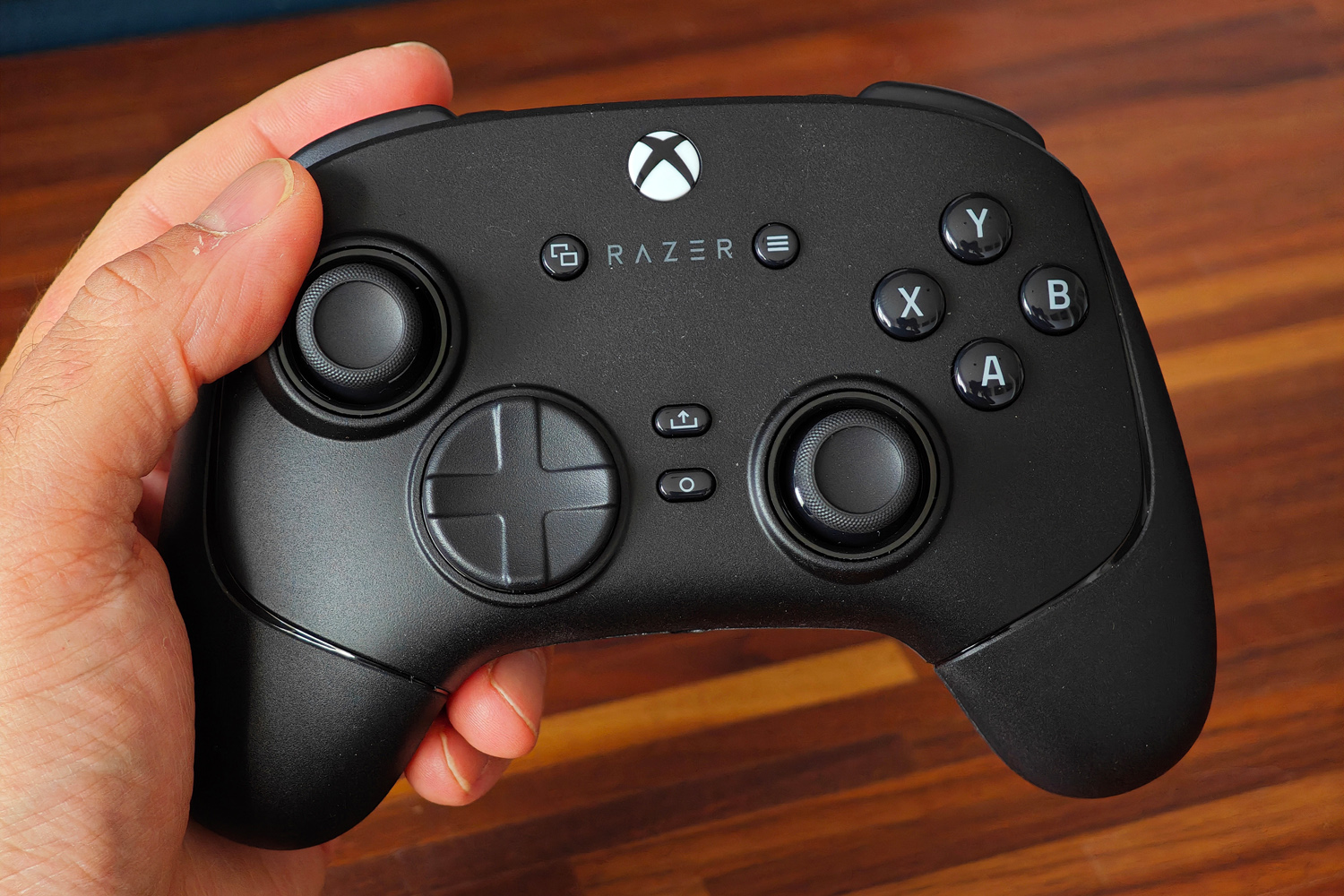
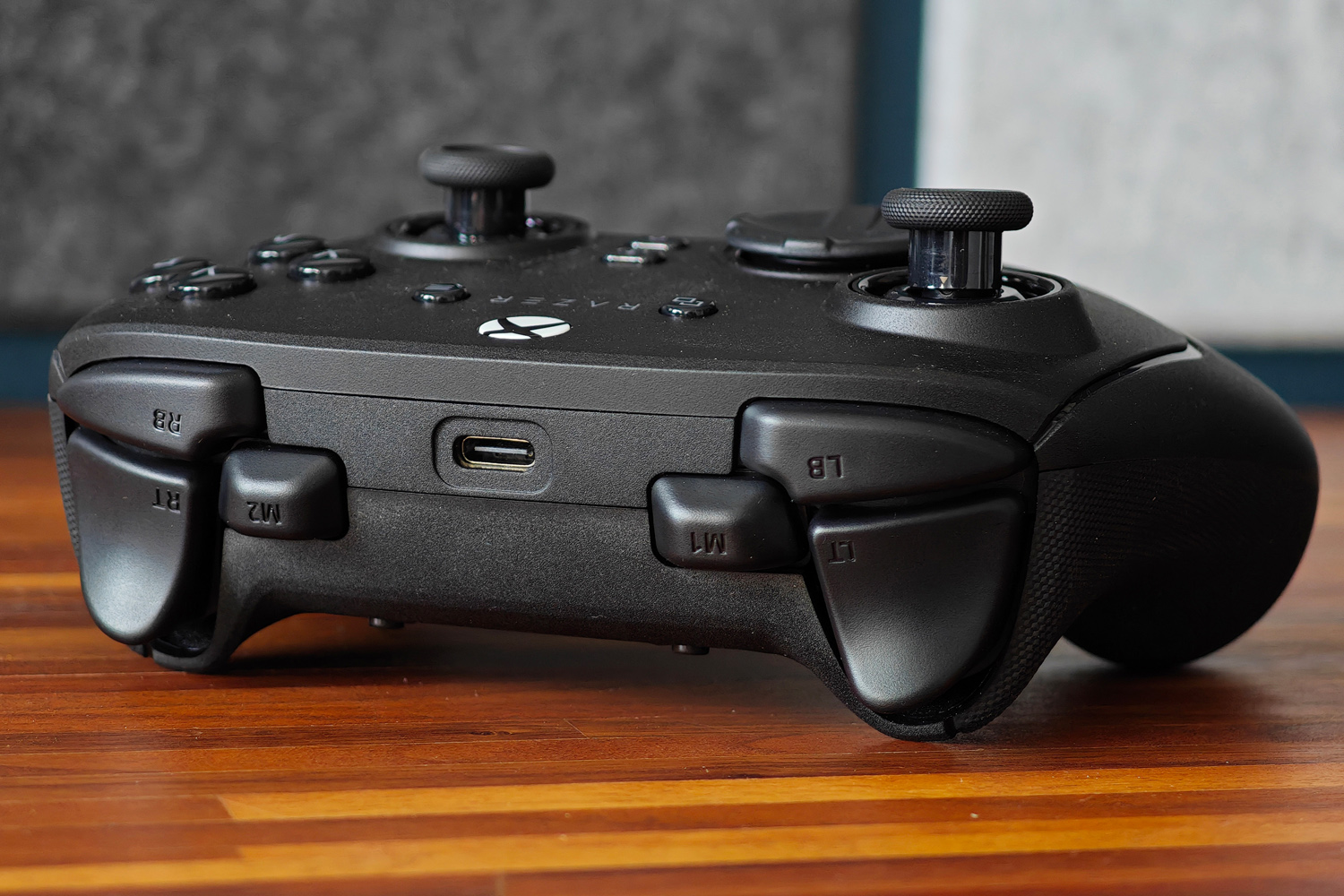
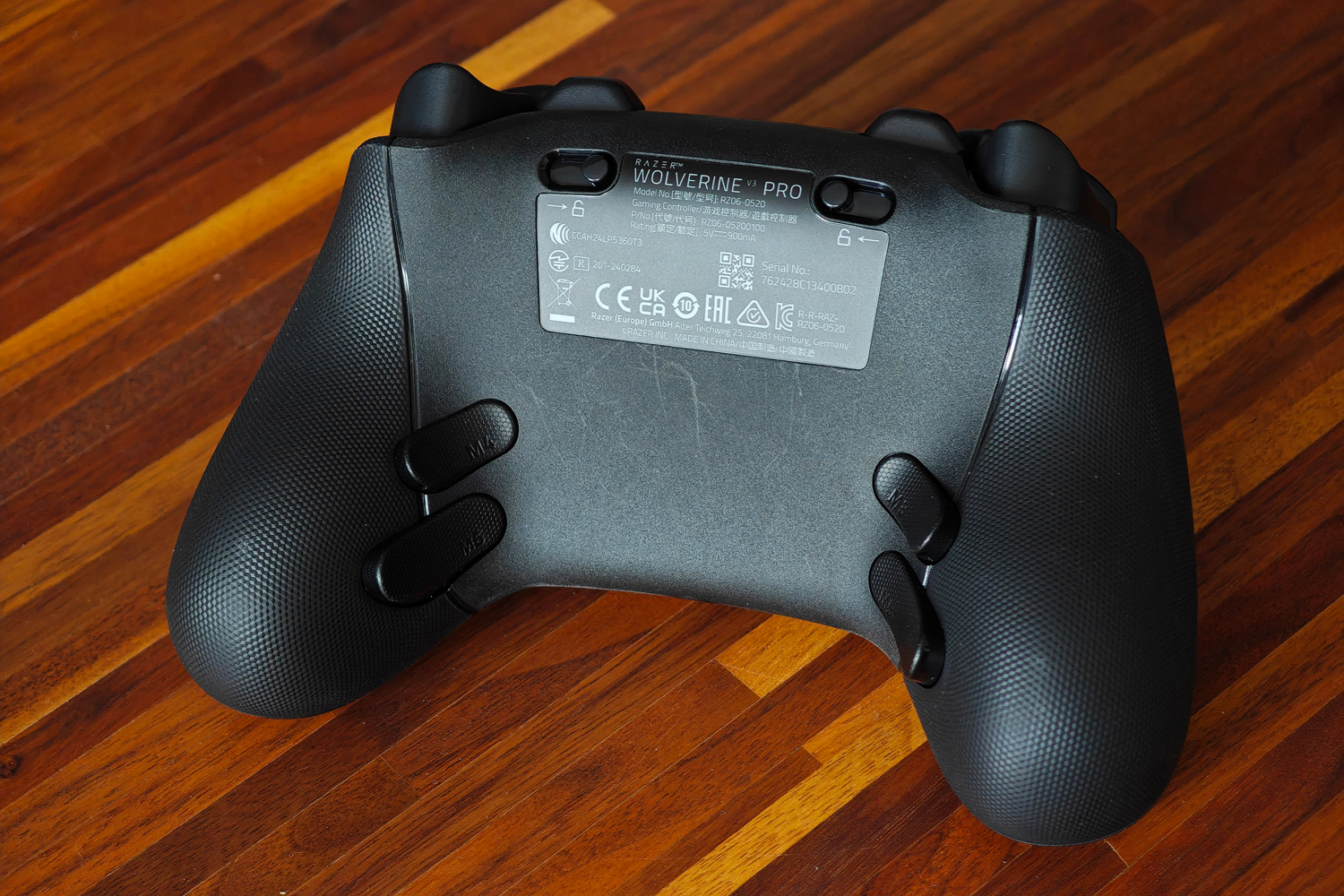
From the front, the Wolverine V3 Pro isn’t all that far removed from the outgoing V2 Chroma. It has the same Xbox-style asymmetric layout, but the flashy RGB lighting strips have been ditched and the top part smoothed out for a more streamlined look. There’s still some illumination, of course – the Razer logo lights up and can be customised through the settings app.
Razer hasn’t changed the overall shape, which is great news because the outgoing model was a seriously comfy pad to hold. It’s satisfyingly weighty, but not so much your wrists will be screaming after an extended play session. A rubberised texture on the back side gives plenty of grip, too. Up top you get the same bumpers and triggers as the V2 model, along with customisable multi-function bumpers and a USB-C port for charging or wired play. A 3.5mm headset input also remains at the bottom edge.
The face has seen the view and menu buttons moved to be more in line with a standard Xbox pad, but the share and audio control buttons stay nestled between the D-pad and right analogue stick. The offset layout means every one can be reached by your left thumb without any unwanted D-pad or analogue inputs.
So far, so similar – but Razer has majorly overhauled the multi-function triggers at the rear. You still get four of ’em, but they’re much smaller than the ones on the previous-gen pad, and sit much closer to the palm grips. Your fingers naturally rest on them now, and with the right macro setup you can completely forego using the A,B,X,Y face buttons.
Depending on whether you want one or two fingers free to operate the top bumpers and triggers, you can use your middle and ring fingers here, or your ring and little fingers. I found the former a little more natural, but the latter effectively means you have every single controller button covered (minus D-pad inputs) at all times – without ever needing to take a thumb off the analogue sticks.
The stop switches that activate the hair trigger mode slide into place with a satisfying mechanical thunk, and are easy to find with your index fingers for quickly swapping between the two styles mid-game.
Features: switch hitter
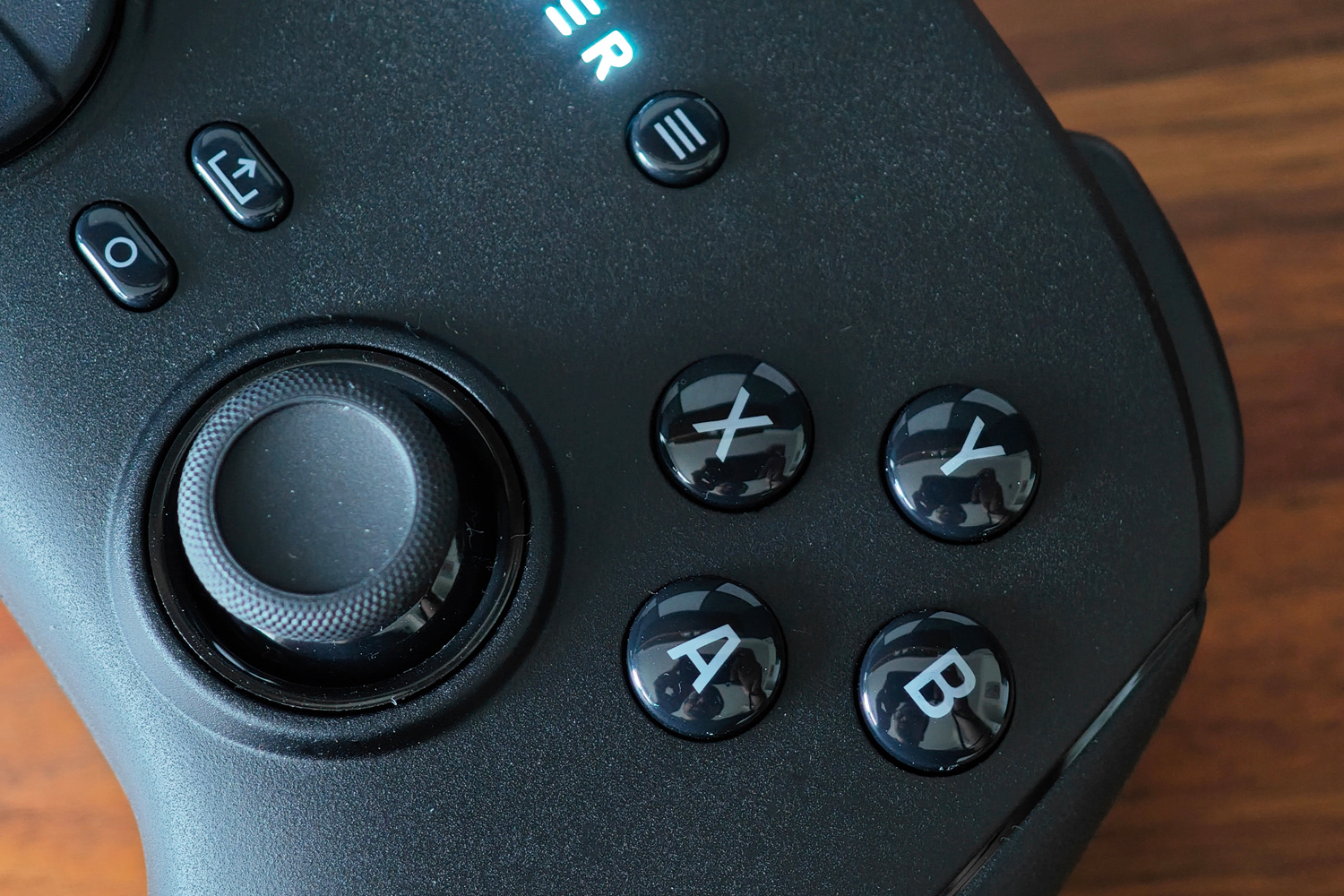
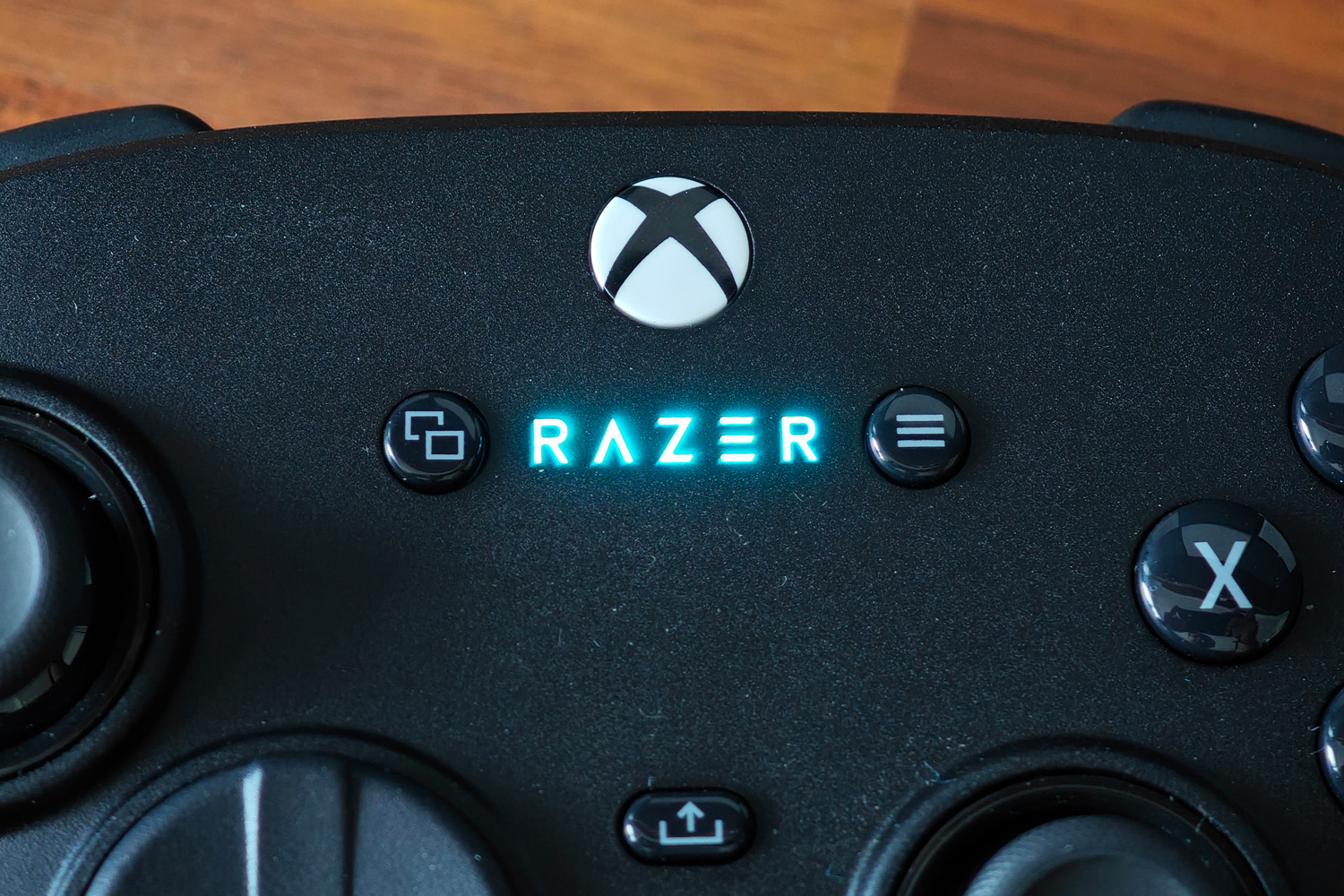
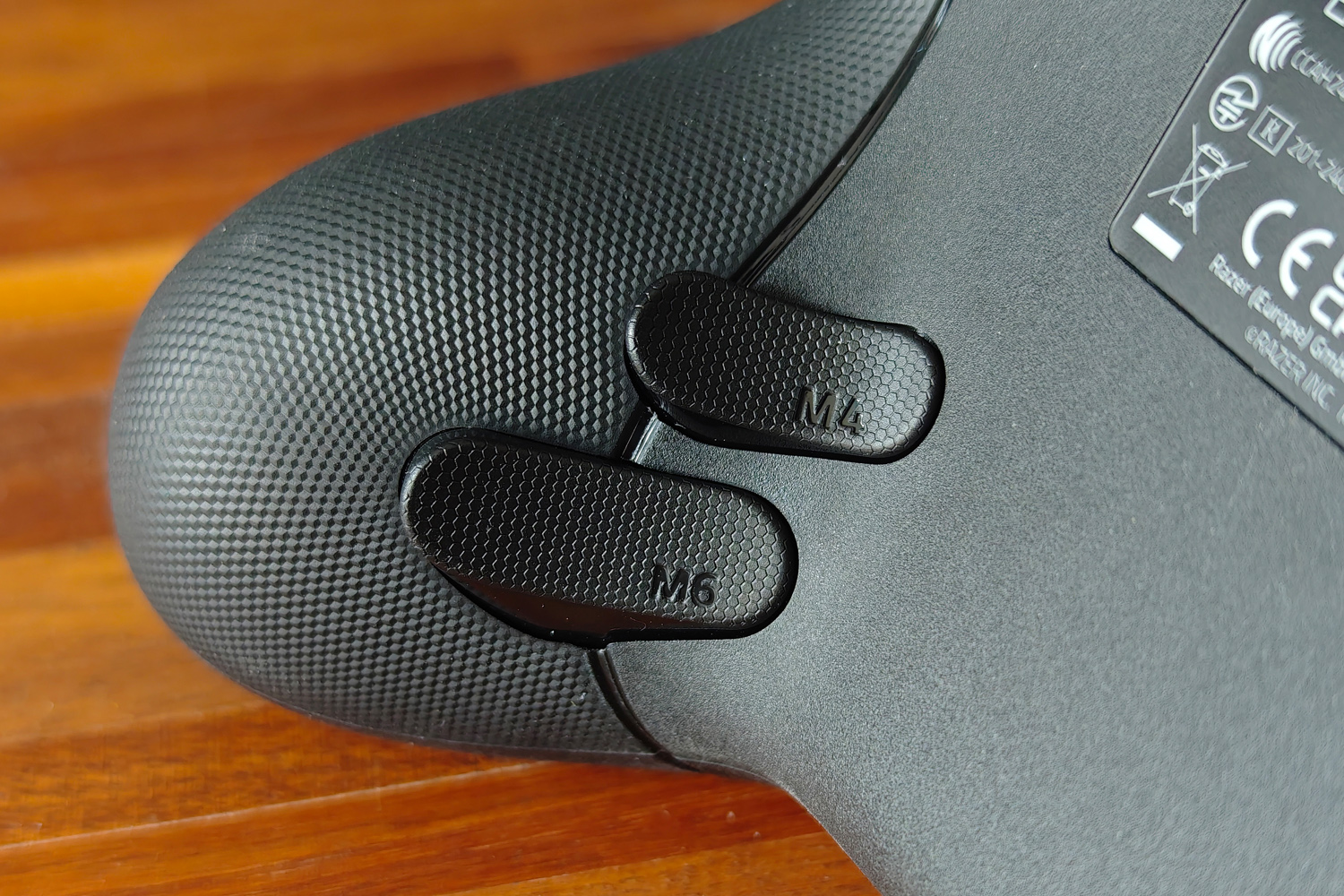
Razer has used plenty of PC gaming know-how for the Wolverine V3 Pro’s inputs. The action buttons and D-pad use the firm’s ‘mecha-tactile’ switches, which is a clicky middle ground between membrane and mechanical, that are oh-so-satisfying to press. The teensy bit of haptic feedback you get every time makes you confident your input was registered. Force feedback rumble is also present and correct, but can be disabled by gamers who find it distracting during online matches. The motors create quite a kick.
Switches normally found on Razer’s gaming mice add even more precision to the the back paddles, and the triggers once the stop switches are engaged. Instead of a long trigger pull, it registers a squeeze pretty much instantly. It’s almost unfair how quickly I could aim down sights and unleash a hail of bullets in Call of Duty.
Hall effect thumbsticks eliminate stick drift, and were wonderfully accurate throughout my testing. The Wolverine V3 Pro isn’t as customisable as the PDP Victrix Pro BFG in this area – if you’re not a fan of offset controllers you’ll need to look elsewhere – but Razer does let you swap out the thumbstick caps. One is taller, with a concave top for greater precision; the other is shorter, with a smoother convex top for more speed. They’re tool-free, too – just give ’em a tug and they’ll pop right off.
There’s space inside the included hard shell carry case for both caps, along with the wireless dongle, 10ft braided USB-C to A cable, and the controller itself. It was easily sturdy enough to keep the controller safe while kicking around in a backpack.
Previous Xbox-friendly Razer pads have all been wired, so it’s great to see the Wolverine V3 Pro add wireless tech to the mix. It depends on a dongle, rather than the console’s built-in receiver, but I had zero issues with latency or connection drop-outs. Pro players will still appreciate the wired tournament mode, though; it kicks the polling rate to 1000Hz and eliminates the possibility of a dead battery or wireless interference. You can only activate it on PC, though – console players stick with the 250Hz rate used by standard Xbox controllers.
In my two weeks of testing I only charged the Wolverine V3 Pro once; Razer reckons it’s good for ‘at least 20 hours’ of continuous play, and based on my time with it there’s more than more than enough capacity here for even the most hardcore gamers.
Software: play your way
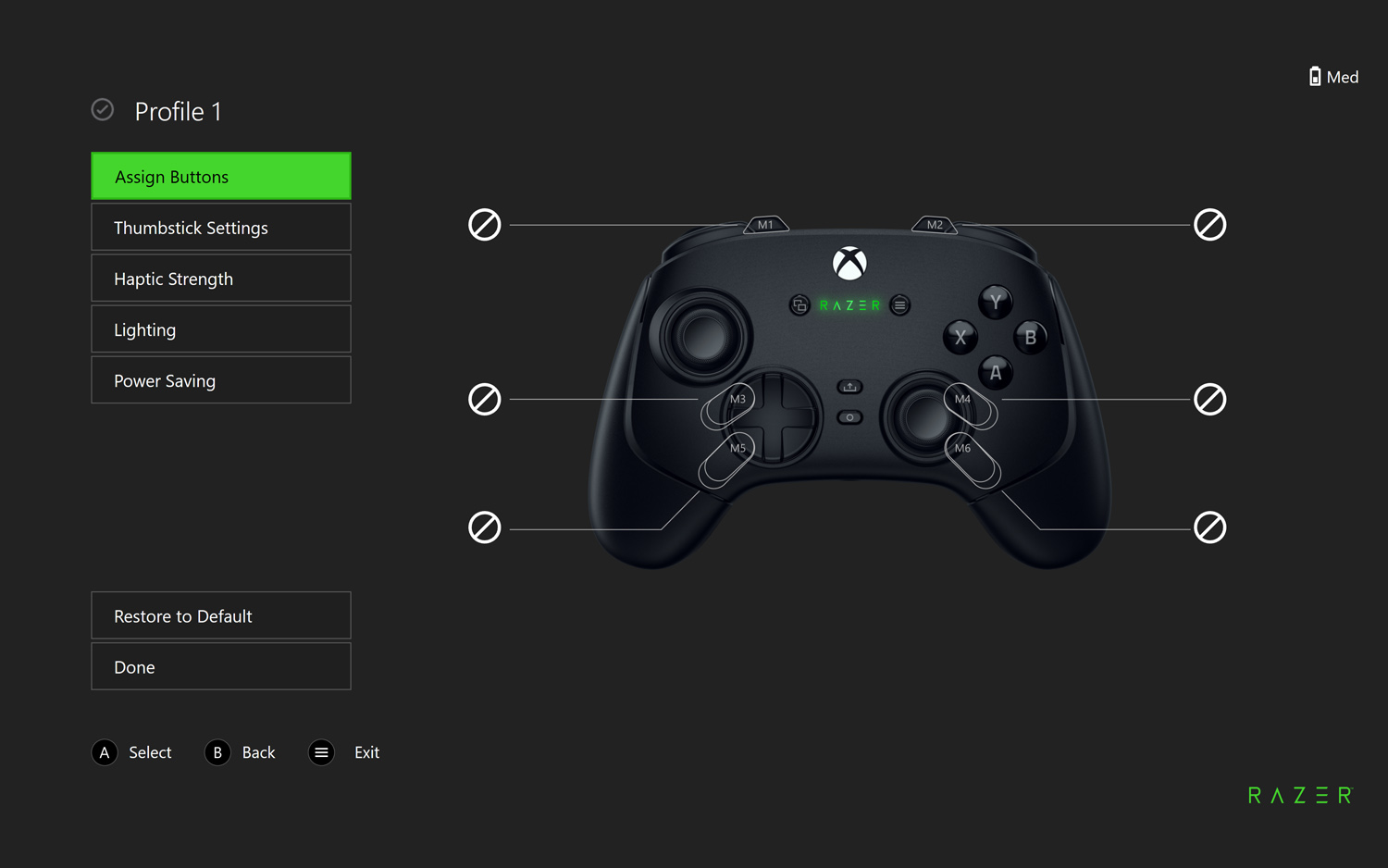
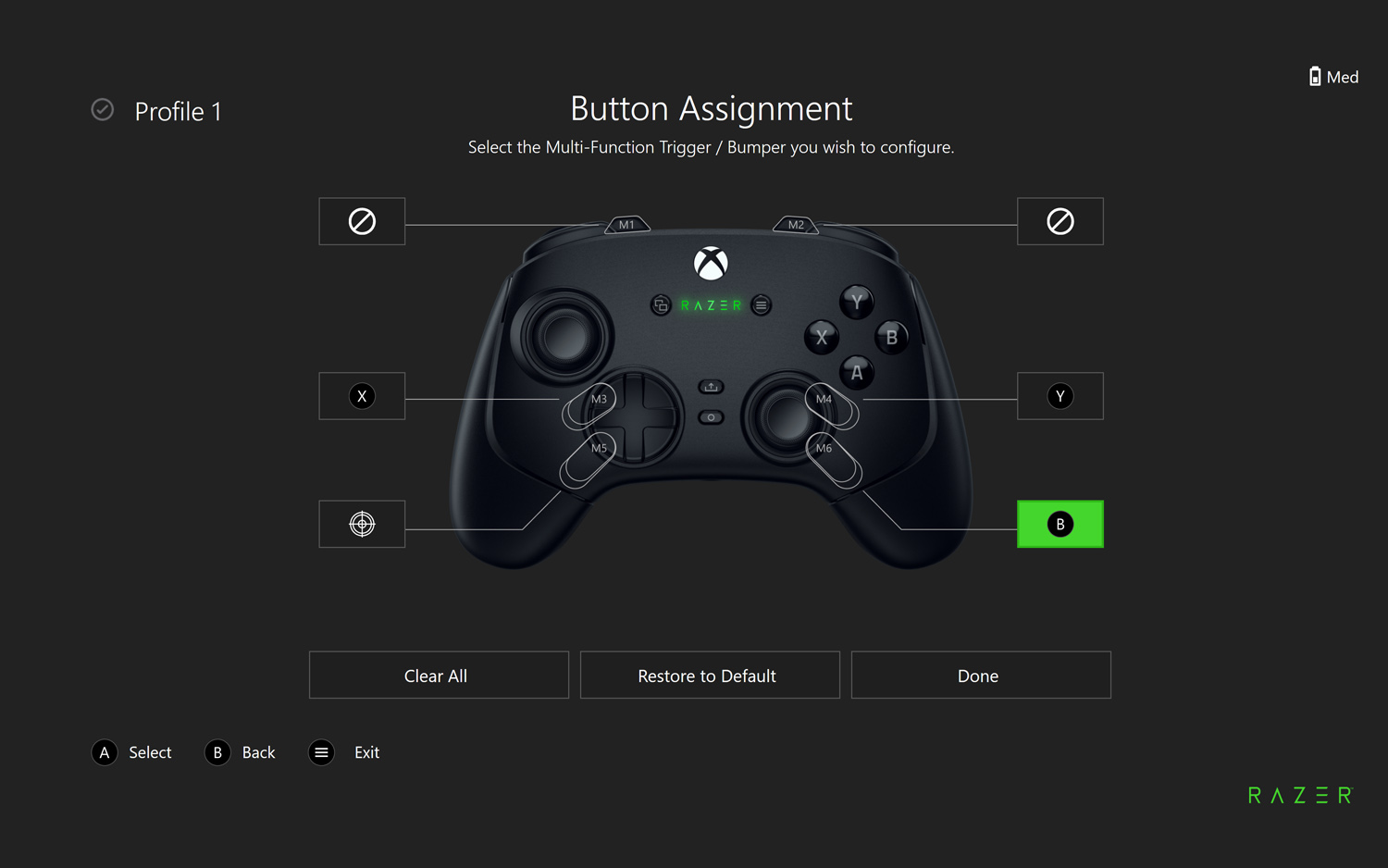
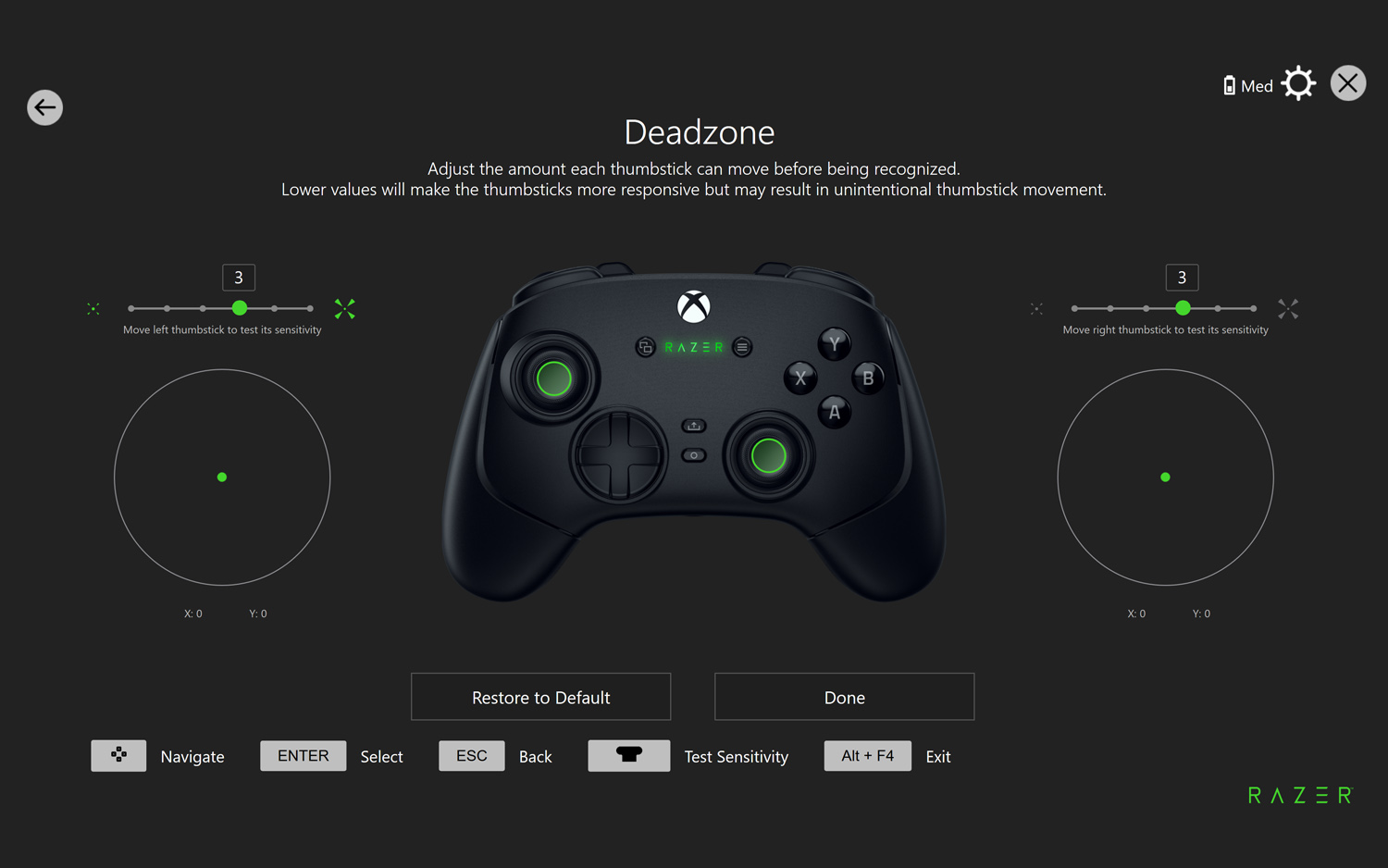
The Wolverine V3 Pro is easy to configure, whether you’re in the console camp or prefer PC. Razer’s Controller Setup app is available for Xbox and Windows through the Microsoft Store, and lets you really fine-tune your setup with stick sensitivity and button customisations. It can also adjust the strength of the haptic feedback, adjust the RGB lighting, and change how quickly it’ll switch off to save power.
You can’t change what the face buttons, bumpers or default triggers do – just the extra multifunction paddles, so there are better options if accessibility is paramount. That’s still six different inputs to assign, though.
Games that demand precision movement will benefit from the sensitivity clutch, which lets you temporarily dial either one or both thumbstick’s sensitivity by holding down one of the multifunction buttons. I preferred a more sensitive right stick for hectic Xdefiant matchmaking, with the option to slow things down once I’d picked up a sniper rifle. You can really dial in your play style in a way you can’t simply be setting one sensitivity level for all eventualities.
Performance: go for pro
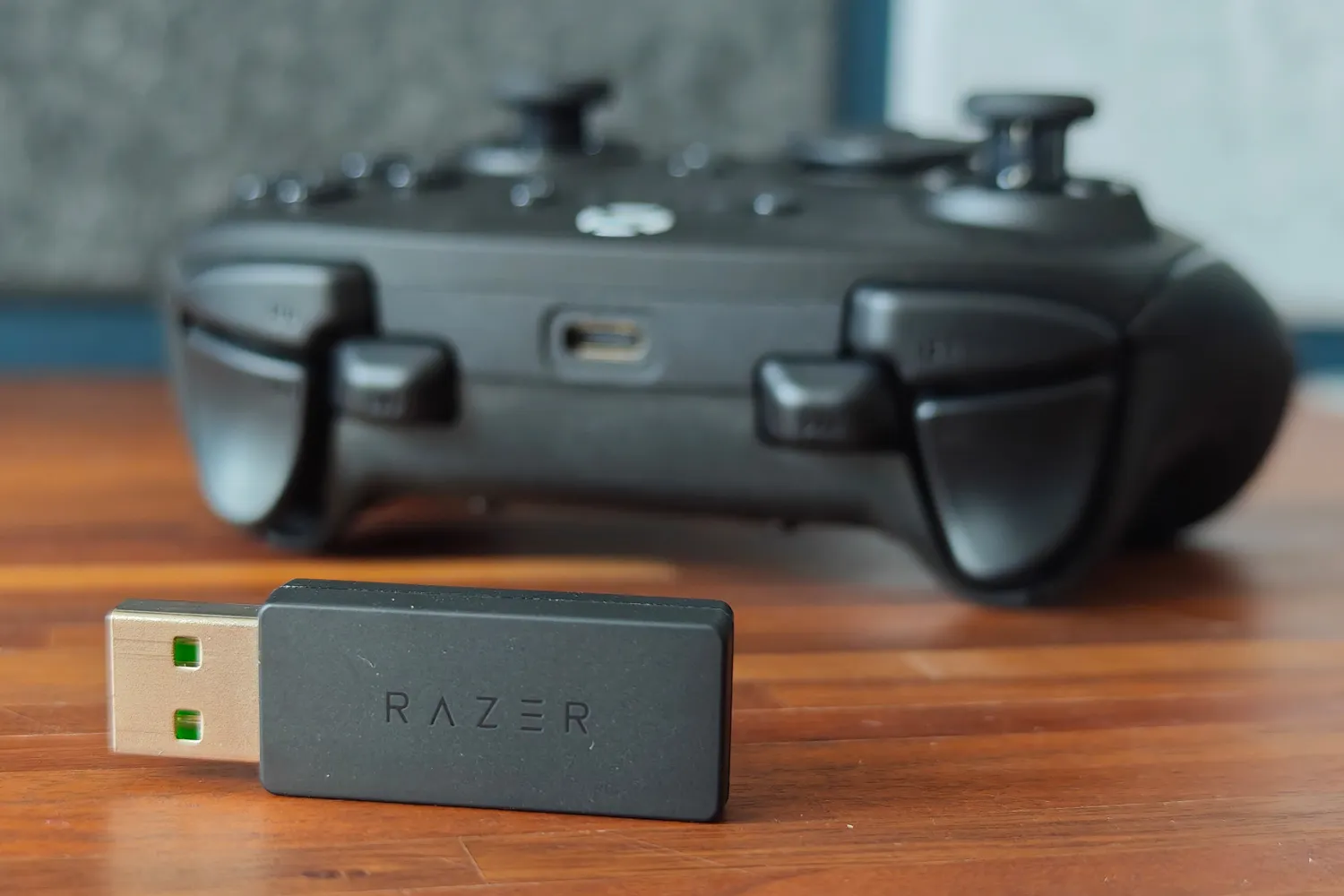
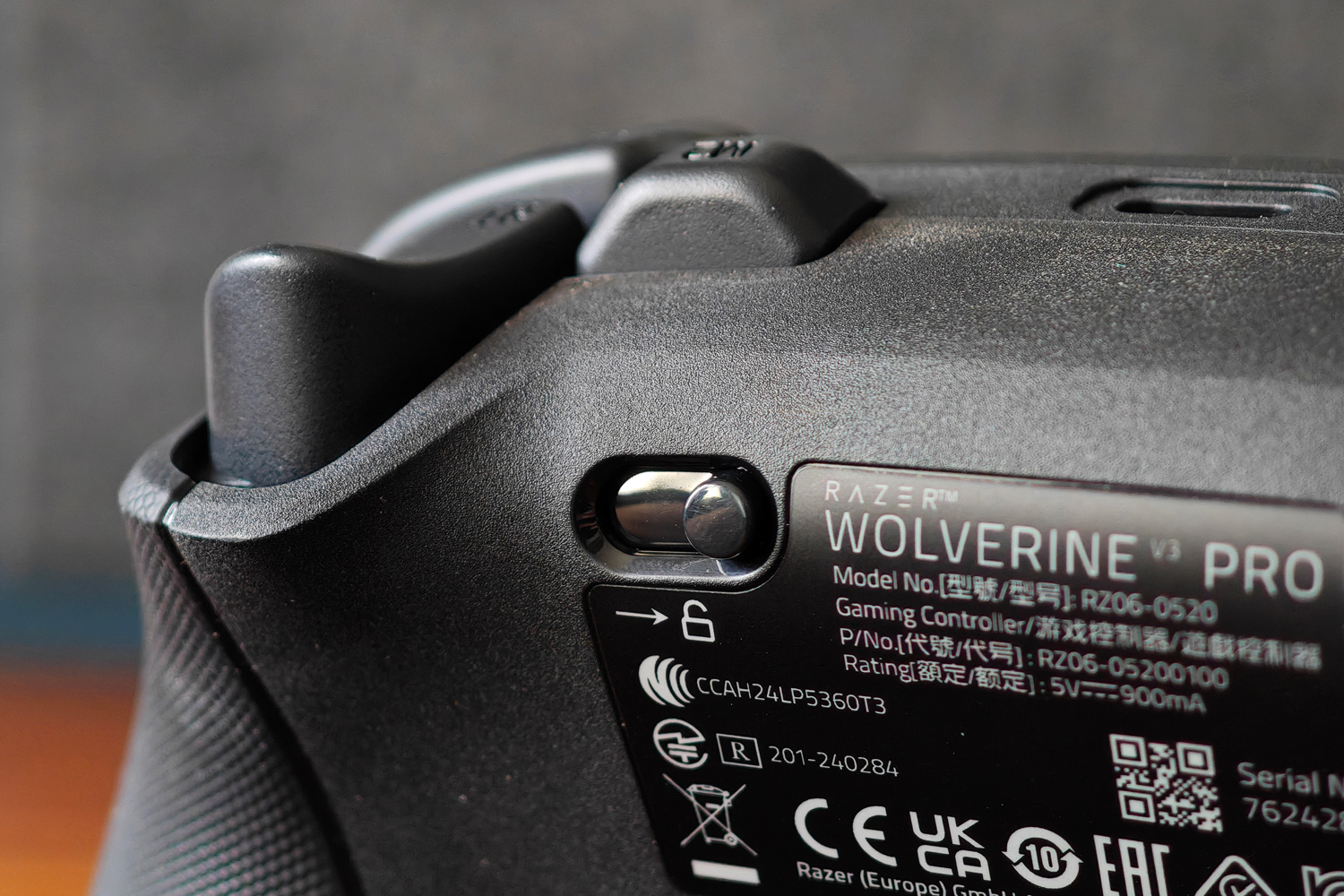
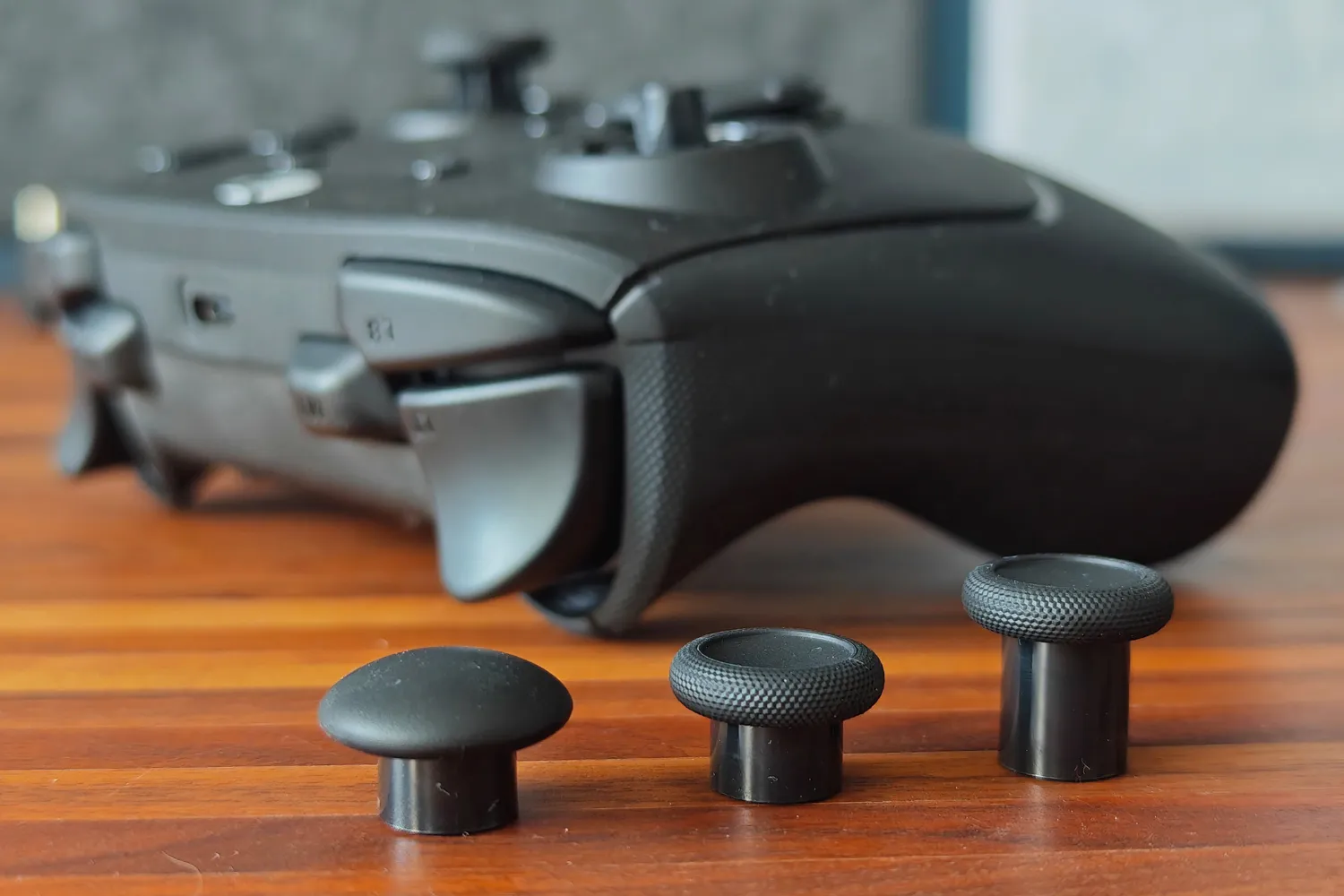
No controller, mouse or keyboard is going to instantly turn you into a professional gamer – but the Wolverine V3 Pro undoubtedly gives you an advantage over pad players still using their console’s bundled kit. Every button press feels more purposeful here, and the customisable buttons allow for a bunch of different grip styles.
I wasn’t tripping over the back paddles constantly like I’ve done on other custom controllers, and their placement meant I used them a lot more often here. I also thought the eight-way D-pad was great for tricky fighting game inputs – though six-button brawlers still play best on an arcade stick.
Racing game fans will appreciate the springy triggers, which have a reasonable travel distance for fine-grain brake and throttle control. Still, it’ll be shooter and FPS players that benefit most. The multifunction paddles will be transformative once you’ve built up the muscle memory to steer clear of the face buttons, letting you strafe and aim while simultaneously jumping, reloading and swapping weapons. Factor in the comfortable, customisable analogue sticks and not even those who earn a paycheque from playing will have anything to gripe about.
Razer Wolverine V3 Pro verdict
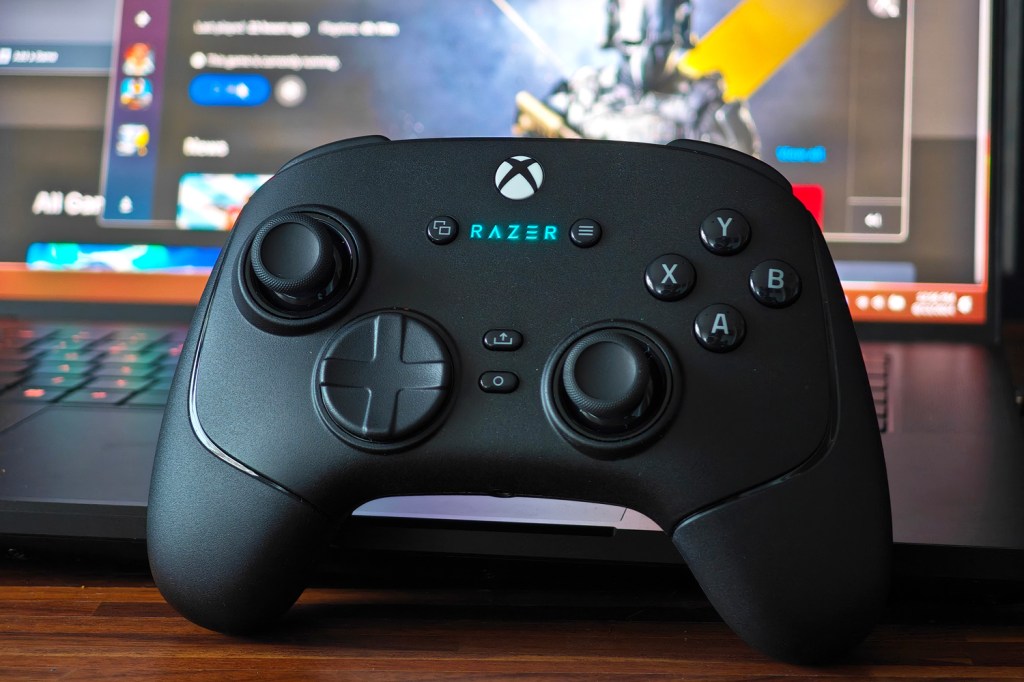
The Wolverine V3 Pro really hones in on what competitive players want from a controller. Razer has absolutely nailed the placement and feel of every button, no matter your grip style, and PS5 owners should rightly feel jealous of the redesigned rear paddles. The haptics are well judged, battery life is great, and the obligatory RGB illumination is as tasteful as it gets.
A controller like this is complete overkill if your game library consists of purely single player titles. It’s also hard to justify if you only frequent the occasional multiplayer lobby. But if you exclusively play competitive shooters or other esports games that prioritise pads? The Wolverine V3 Pro is like wielding laser guided missile when your opponents have bows and arrows.
Stuff Says…
An outstandingly capable controller that’s solely focused on competition. Ultra-responsive inputs mean the Wolverine V3 Pro will surely become an esports mainstay
Pros
Ultra-precise buttons, triggers and analogue sticks-
Perfectly place macro buttons for different grip styles
Flawless wired and wireless performance
Cons
Bad stuff 1
Bad stuff 2

